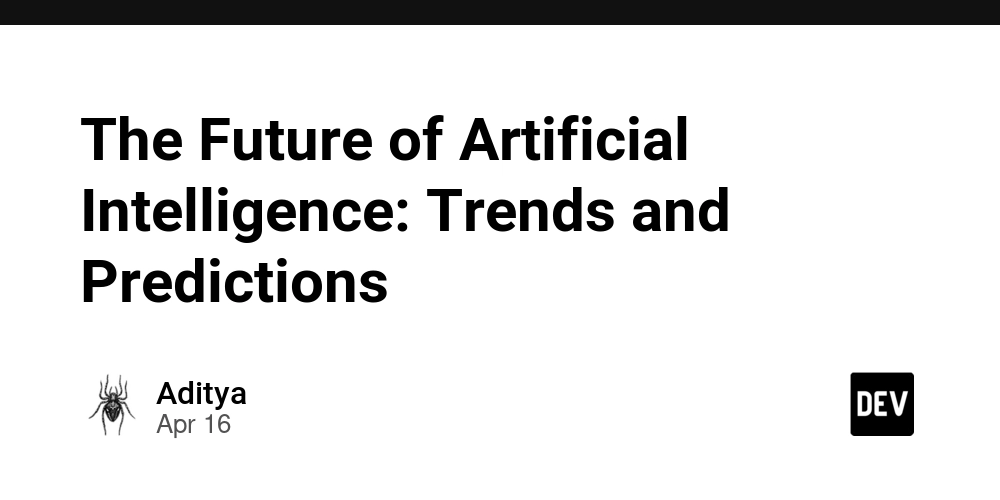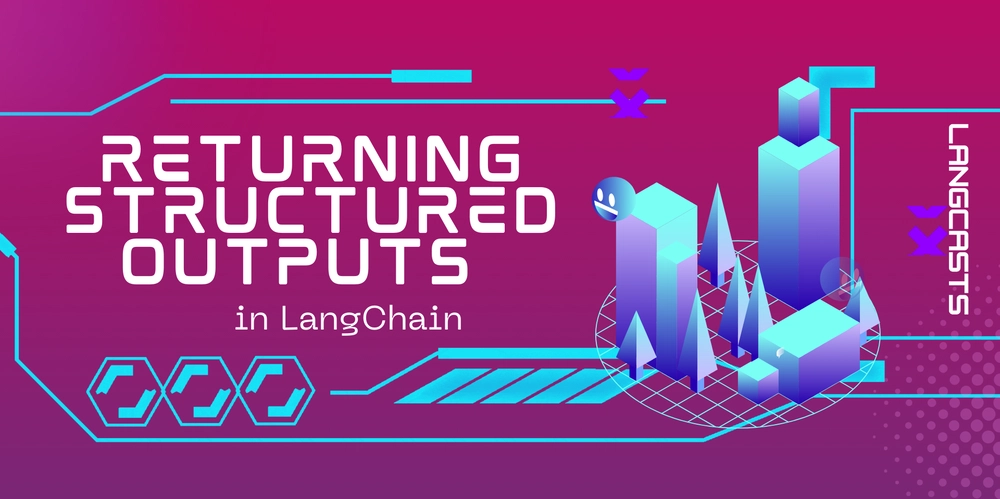The Future of Artificial Intelligence: Trends and Predictions
The Future of Artificial Intelligence: Trends and Predictions Artificial Intelligence (AI) stands at the forefront of technological innovation, promising to revolutionize every aspect of human existence in the coming years. Defined as the simulation of human intelligence processes by machines, AI has already begun to permeate various sectors, from healthcare to finance, from transportation to entertainment. As we embark upon this journey into the future, understanding the trends and predictions surrounding AI becomes paramount. The current landscape of AI development showcases remarkable advancements in machine learning algorithms, deep learning techniques, and natural language processing capabilities. These advancements also intersect with online marketplace trends, as AI continues to shape digital commerce platforms and buyer-seller interactions. However, what lies ahead is even more promising and transformative. This introductory exploration into the future of AI aims to delve into the emerging trends shaping its evolution, from the proliferation of autonomous systems to the ethical considerations surrounding its widespread adoption. By examining these trends and predictions, we gain insights into the potential impacts of AI on society, economy, and individual lives, thereby equipping ourselves to navigate the challenges and opportunities that lie ahead in this AI-driven era. Current State of AI The current state of AI showcases a dynamic landscape characterized by rapid technological advancements and widespread adoption across diverse domains. Machine learning, a subset of AI, has witnessed remarkable progress, fueled by the availability of vast amounts of data and powerful computing resources. This progress has led to the development of sophisticated algorithms capable of learning from data and making intelligent predictions or decisions. Deep learning, in particular, has emerged as a dominant paradigm within machine learning, enabling the creation of neural networks with multiple layers that can automatically extract intricate patterns from data. Natural language processing (NLP) has also seen significant advancements, with AI systems becoming increasingly proficient at understanding and generating human language. Moreover, AI technologies have permeated various sectors, including healthcare, finance, transportation, and entertainment. In healthcare, AI is being leveraged for medical imaging analysis, drug discovery, and personalized treatment recommendations. In finance, AI-powered algorithms are used for fraud detection, algorithmic trading, and customer service automation, and prospecting that enables firms to identify and engage potential clients more effectively through data-driven insights. Transportation is witnessing the rise of autonomous vehicles and intelligent traffic management systems driven by AI. Similarly, in entertainment, AI is employed for content recommendation, personalized marketing, programmatic video advertising and even creative tasks such as generating designs, music, or art. AI recruiting tools are also becoming increasingly prevalent, streamlining hiring processes through resume screening, candidate matching, and predictive analytics.Overall, the current state of AI reflects a vibrant ecosystem characterized by innovation, experimentation, and transformative applications across industries. Trends in AI Development 1) Advancements in Machine Learning Algorithms: Continuous refinement and development of machine learning algorithms, such as reinforcement learning, transfer learning, and meta-learning, enabling AI systems to learn from data more efficiently and effectively. 2) Growth of Deep Learning and Neural Networks: Increasing focus on deep learning techniques, fueled by the availability of big data and computational resources, leading to breakthroughs in image recognition, speech recognition, and natural language processing. 3) Evolution of Natural Language Processing (NLP) and Understanding: Progress in NLP techniques, including semantic analysis, sentiment analysis, and language generation, empowering AI systems to comprehend and generate human-like language with greater accuracy and nuance. 4) Expansion of AI in Robotics and Automation: Integration of AI with robotics and automation technologies, enabling the development of autonomous systems for tasks ranging from manufacturing and logistics to healthcare and agriculture, and even environmental monitoring, such as managing and measuring forest carbon for climate impact assessments.. 5) Integration of AI with Internet of Things (IoT): Synergistic relationship between AI and IoT technologies, enabling the creation of intelligent connected devices capable of collecting, analyzing, and acting upon data in real-time. 6) Rise of AI in Decision-Making Processes: Growing utilization of AI-powered decision support systems across industries, augmenting human decision-making with data-

The Future of Artificial Intelligence: Trends and Predictions
Artificial Intelligence (AI) stands at the forefront of technological innovation, promising to revolutionize every aspect of human existence in the coming years. Defined as the simulation of human intelligence processes by machines, AI has already begun to permeate various sectors, from healthcare to finance, from transportation to entertainment.
As we embark upon this journey into the future, understanding the trends and predictions surrounding AI becomes paramount. The current landscape of AI development showcases remarkable advancements in machine learning algorithms, deep learning techniques, and natural language processing capabilities. These advancements also intersect with online marketplace trends, as AI continues to shape digital commerce platforms and buyer-seller interactions.
However, what lies ahead is even more promising and transformative. This introductory exploration into the future of AI aims to delve into the emerging trends shaping its evolution, from the proliferation of autonomous systems to the ethical considerations surrounding its widespread adoption.
By examining these trends and predictions, we gain insights into the potential impacts of AI on society, economy, and individual lives, thereby equipping ourselves to navigate the challenges and opportunities that lie ahead in this AI-driven era.
Current State of AI
The current state of AI showcases a dynamic landscape characterized by rapid technological advancements and widespread adoption across diverse domains. Machine learning, a subset of AI, has witnessed remarkable progress, fueled by the availability of vast amounts of data and powerful computing resources.
This progress has led to the development of sophisticated algorithms capable of learning from data and making intelligent predictions or decisions. Deep learning, in particular, has emerged as a dominant paradigm within machine learning, enabling the creation of neural networks with multiple layers that can automatically extract intricate patterns from data.
Natural language processing (NLP) has also seen significant advancements, with AI systems becoming increasingly proficient at understanding and generating human language.
Moreover, AI technologies have permeated various sectors, including healthcare, finance, transportation, and entertainment. In healthcare, AI is being leveraged for medical imaging analysis, drug discovery, and personalized treatment recommendations.
In finance, AI-powered algorithms are used for fraud detection, algorithmic trading, and customer service automation, and prospecting that enables firms to identify and engage potential clients more effectively through data-driven insights. Transportation is witnessing the rise of autonomous vehicles and intelligent traffic management systems driven by AI.
Similarly, in entertainment, AI is employed for content recommendation, personalized marketing, programmatic video advertising and even creative tasks such as generating designs, music, or art. AI recruiting tools are also becoming increasingly prevalent, streamlining hiring processes through resume screening, candidate matching, and predictive analytics.Overall, the current state of AI reflects a vibrant ecosystem characterized by innovation, experimentation, and transformative applications across industries.
Trends in AI Development
1) Advancements in Machine Learning Algorithms: Continuous refinement and development of machine learning algorithms, such as reinforcement learning, transfer learning, and meta-learning, enabling AI systems to learn from data more efficiently and effectively.
2) Growth of Deep Learning and Neural Networks: Increasing focus on deep learning techniques, fueled by the availability of big data and computational resources, leading to breakthroughs in image recognition, speech recognition, and natural language processing.
3) Evolution of Natural Language Processing (NLP) and Understanding: Progress in NLP techniques, including semantic analysis, sentiment analysis, and language generation, empowering AI systems to comprehend and generate human-like language with greater accuracy and nuance.
4) Expansion of AI in Robotics and Automation: Integration of AI with robotics and automation technologies, enabling the development of autonomous systems for tasks ranging from manufacturing and logistics to healthcare and agriculture, and even environmental monitoring, such as managing and measuring forest carbon for climate impact assessments..
5) Integration of AI with Internet of Things (IoT): Synergistic relationship between AI and IoT technologies, enabling the creation of intelligent connected devices capable of collecting, analyzing, and acting upon data in real-time.
6) Rise of AI in Decision-Making Processes: Growing utilization of AI-powered decision support systems across industries, augmenting human decision-making with data-driven insights and predictions.Consider exploring how coworking space software integrations are leveraging AI for smarter, automated workspace management.
7) Increasing Focus on AI Ethics and Responsible AI Development: Heightened awareness and emphasis on ethical considerations in AI development, including fairness, transparency, accountability, and privacy, to ensure that AI systems are developed and deployed responsibly for the benefit of society.
Predictions for the Future of AI
1) Enhanced Personalization: AI will facilitate unprecedented levels of personalization in products and services, tailoring experiences to individual preferences and behaviors through advanced algorithms and data analytics.
2) Autonomous Vehicles and Transportation Systems: The future will witness widespread adoption of autonomous vehicles, revolutionizing transportation with safer, more efficient, and environmentally sustainable modes of travel.
3) AI-driven Healthcare and Personalized Medicine: AI will play a pivotal role in healthcare, enabling precise diagnostics, personalized treatment plans, and predictive analytics to improve patient outcomes and revolutionize medical research.
4) AI-powered Virtual Assistants and Chatbots: AI-powered call centers paired with virtual assistants and chatbots will become ubiquitous, offering personalized assistance and customer service across various industries, enhancing efficiency and accessibility.
5) Impact on Job Market and Employment: AI adoption will reshape the job market, with automation leading to the displacement of certain roles while creating new opportunities in AI development, data science, and human-AI collaboration. With the help of AI-powered talent assessment tools, assessing candidates will become much easier.
6) Ethical Considerations and Regulation: The proliferation of AI will necessitate robust ethical frameworks and regulations to address concerns related to bias, privacy, security, and accountability in AI systems.
7) Potential Risks and Challenges: Despite its transformative potential, AI also poses risks such as job displacement, algorithmic bias, and the potential for misuse or malicious intent, underscoring the importance of responsible AI development and governance.
These predictions offer a glimpse into the transformative potential of AI and highlight the need for proactive planning and ethical considerations to harness its benefits while mitigating risks.
Implications and Considerations
1) Socio-economic Impacts: The widespread adoption of AI has profound implications for the workforce, with automation potentially displacing traditional jobs while creating new ones. This shift could exacerbate existing inequalities and necessitate retraining programs to mitigate unemployment.
2) Ethical Dilemmas: AI introduces complex ethical considerations, such as biases in algorithms, privacy concerns, and the potential for autonomous systems to make life-and-death decisions. Addressing these dilemmas requires robust ethical frameworks and oversight mechanisms.
3) Ensuring Fairness and Transparency: AI systems must be designed to prioritize fairness, transparency, and accountability to prevent discrimination and promote trust. This involves transparent data collection, unbiased algorithms, and mechanisms for recourse in case of errors or misuse.
4) Collaboration and Governance: Effective governance structures are essential to regulate AI development and deployment, involving collaboration between governments, industry, academia, and civil society. International cooperation is also crucial to address cross-border challenges and ensure global standards.
5) Education and Upskilling Initiatives: As AI reshapes the labor market, education and upskilling programs are essential to equip individuals with the skills needed to thrive in an AI-driven economy. This includes fostering digital literacy, critical thinking, and adaptability to technological changes.
For younger learners and students, platforms like DIY’s AI Homework Helper offer interactive tools and guided AI learning experiences that make complex concepts more accessible and engaging.
These implications and considerations underscore the importance of proactive planning and responsible AI development to harness its benefits while mitigating risks and ensuring a more equitable and sustainable future.
Conclusion
In conclusion, the future of Artificial Intelligence (AI) is a landscape ripe with both promise and complexity. As we peer into the horizon of technological advancement, we witness the potential for AI to revolutionize industries, improve efficiency, and enhance quality of life.
Yet, alongside these opportunities, lurk challenges that demand our attention and proactive engagement. Ethical considerations, socio-economic impacts, and the need for responsible governance loom large as we navigate this AI-driven future.
It is imperative that we approach the development and deployment of AI systems with a steadfast commitment to transparency, fairness, and accountability. Collaboration between industry leaders, policymakers, ethicists, and technologists will be essential in ensuring that AI serves humanity's best interests.
Moreover, investments in education and upskilling programs will empower individuals to adapt to the changing landscape of work and seize the opportunities presented by AI. By embracing these principles and fostering a culture of responsible innovation, we can harness the transformative power of AI while mitigating its potential risks.
As digital commerce grows, AI will play an integral role in areas like marketplace website development, helping businesses build smarter, more scalable platforms. As we embark on this journey into the future, let us do so with a shared vision of leveraging AI to create a more equitable, prosperous, and sustainable world for generations to come.




























![[Webinar] AI Is Already Inside Your SaaS Stack — Learn How to Prevent the Next Silent Breach](https://blogger.googleusercontent.com/img/b/R29vZ2xl/AVvXsEiOWn65wd33dg2uO99NrtKbpYLfcepwOLidQDMls0HXKlA91k6HURluRA4WXgJRAZldEe1VReMQZyyYt1PgnoAn5JPpILsWlXIzmrBSs_TBoyPwO7hZrWouBg2-O3mdeoeSGY-l9_bsZB7vbpKjTSvG93zNytjxgTaMPqo9iq9Z5pGa05CJOs9uXpwHFT4/s1600/ai-cyber.jpg?#)














































































































































![[The AI Show Episode 144]: ChatGPT’s New Memory, Shopify CEO’s Leaked “AI First” Memo, Google Cloud Next Releases, o3 and o4-mini Coming Soon & Llama 4’s Rocky Launch](https://www.marketingaiinstitute.com/hubfs/ep%20144%20cover.png)





































































































































































































![Rogue Company Elite tier list of best characters [April 2025]](https://media.pocketgamer.com/artwork/na-33136-1657102075/rogue-company-ios-android-tier-cover.jpg?#)







































































_Andreas_Prott_Alamy.jpg?width=1280&auto=webp&quality=80&disable=upscale#)





































































































![Apple Watch Series 10 Back On Sale for $299! [Lowest Price Ever]](https://www.iclarified.com/images/news/96657/96657/96657-640.jpg)
![EU Postpones Apple App Store Fines Amid Tariff Negotiations [Report]](https://www.iclarified.com/images/news/97068/97068/97068-640.jpg)
![Apple Slips to Fifth in China's Smartphone Market with 9% Decline [Report]](https://www.iclarified.com/images/news/97065/97065/97065-640.jpg)



































































































































